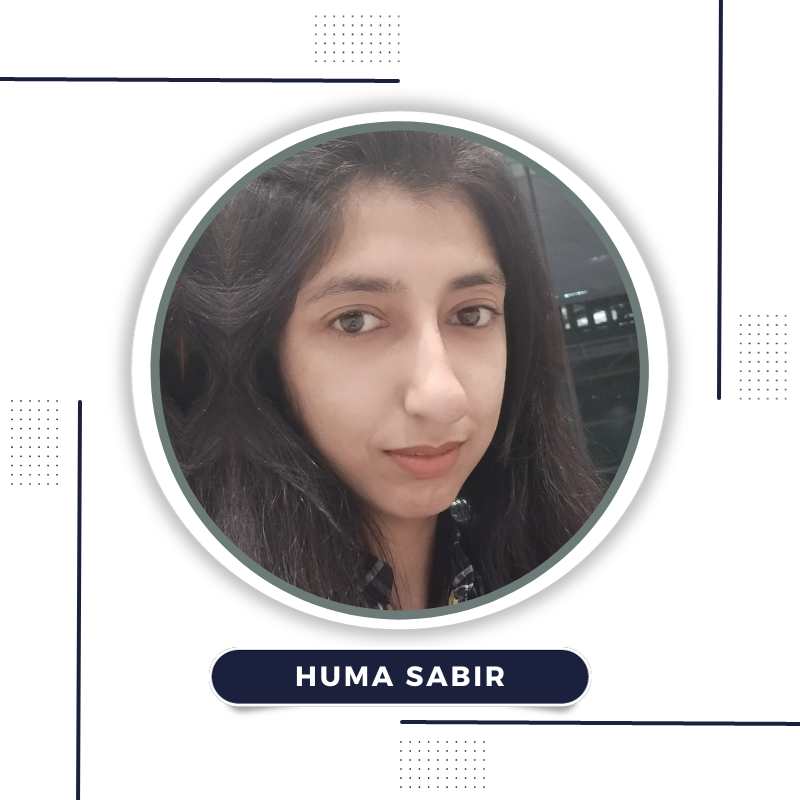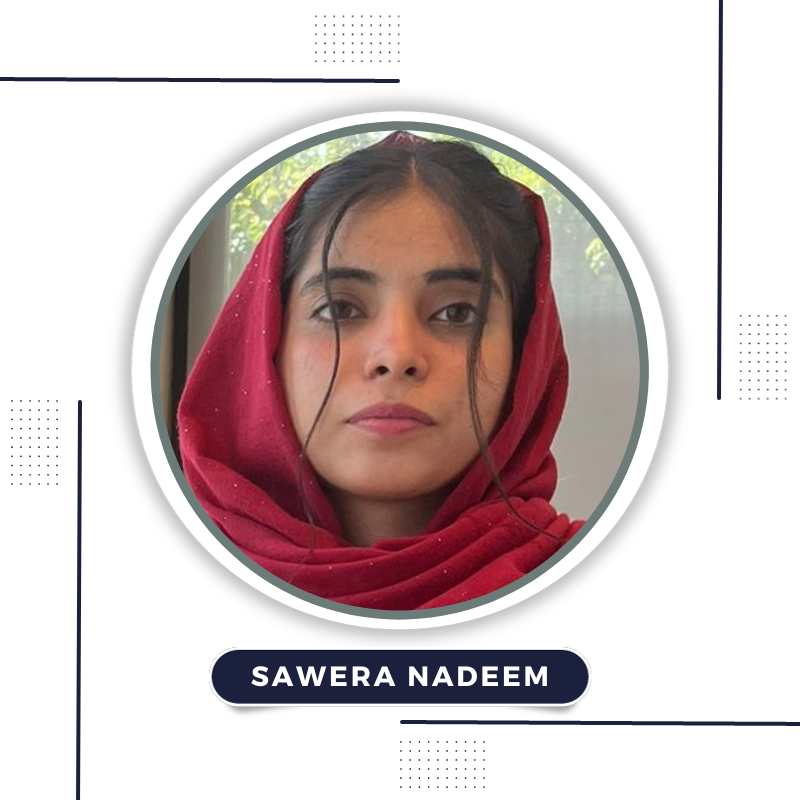





Welcome to The Black Hole’s Teachers’ Training Program!
We are delighted to share the progress of the program since its announcement on September 19th.
The response to the program has been overwhelming, with a total of 497 candidates applying for this educational initiative. Following an initial evaluation, 229 candidates were shortlisted for the entrance test.
The entrance test, held on October 14th, saw active participation from 120 applicants. For those interested, you can find the test solutions here.
The top 27 scorers from the entrance test were invited for interviews on November 10th and 11th. After rigorous assessments, six applicants were selected to join the program.
The program officially commenced on Sunday, November 12th, marking the beginning of an exciting educational journey.
For selected trainees who will participate in weekly, in-person examination at TBH Islamabad, stipends will be provided.
While the program is open to candidates worldwide, it is particularly designed to benefit speakers of Urdu, Hindi, and English. Even if you didn’t apply or weren’t selected, don’t miss out! Weekly teachers’ training modules will be uploaded for your learning pleasure.
Thank you for your interest in The Black Hole’s Teachers’ Training Program.
This training course is a unique hybrid designed for honing high-school level math-physics skills by combining internet materials with personalized testing. Some lab work will also be performed.
All trainees are required to abide by the following rules.
- Every Monday (or earlier) a new teaching module will be uploaded onto the TBH website. These materials pre-exist on the internet and have been carefully repackaged for maximum coherence. All videos must be fully watched and understood. There may also be some helpful notes.
- All practice problems must be attempted but they will not be graded. Instead the trainee may expect to be questioned on any of these.
- Given the internet based nature of instruction only trainees owning a laptop or having access to one can participate in the program.
- Every week the trainee will be extensively examined on the topic of the previous week. Each must be prepared to deliver a lecture to the examiners as though she/he is addressing a class. The examiners may choose to invite other persons as well, including high school students. The trainee should anticipate being questioned by anyone present. However the atmosphere will be friendly and designed to accelerate learning.
- The trainee will book her/his slot for the weekly examination by contacting the designated person at TBH. If for some exceptional reason an exam must be skipped, explicit permission must be obtained from this person.
- Every successful examination will be rewarded with a simple checkmark signifying a pass. No marks will be assigned. After four checkmarks the trainee will be eligible for receiving a payment by crossed cheque of Rs. 40,000. No payment will be made until four checkmarks have been attained.
- If an examination does not yield a checkmark the trainee will be allowed to repeat the module one more time. If this also does not result in a checkmark it will be at the examiners discretion whether the trainee should be terminated or given yet another chance.
- All trainee examinations will be held in the TBH auditorium. Lab work will be done in the TBH children’s lab on the top floor.
- The training course duration is 48 weeks. Those who complete all 48 modules will receive a certificate from The Black Hole. The certificate will state that the trainee has been found able and competent to teach physics and mathematics as per best international standards for all classes up to and including class twelve.
Topics
- The scope of physics
- The scientific method
- Physics and common sense
- Orders of magnitude
- Dimensions of physical quantities
- Dimensional analysis in biology
Videos
Watch all videos below carefully and make sure you understand every point. Feel free to watch other videos that you can locate on the above topics.
- Overview of physics (click for video)
- Order of magnitude (click for video)
- Dimensions in biology (click for video)
- Dimensions in city planning (click for video)
Notes
These are supplementary and do not contain all that is in the above videos.
Exercises
Compulsory. If you have difficulty answering a problem then search the internet or ask ChatGPT. If all else fails contact your tutor before the scheduled examination.
Instructions for Module 2
This module will be a systematic introduction to some basic concepts in mathematics. Our goal will be to learn calculus and then ultimately apply it to physical problems.
Topics
Review of numbers
- Function, domain, and range
- Sums and products of functions
- Composite functions (function of a function)
- Inverse functions
- Basics of plotting functions
- Functions that are defined piecewise
- Trigonometric functions
- The case of sin(1/x)
- How to plot an unplottable function
Videos
Watch all videos below carefully and make sure you understand every point. Feel free to watch other videos that you can locate on the above topics.
- Numbers and functions (English, Urdu)
- Graphs of functions – I (English, Urdu)
- Graphs of functions – II (English, Urdu)
Notes
The parts you must read are here. They have been extracted from Paul Dawkins comprehensive calculus course. For your future reference the full book is available here.
Exercises and Solutions
You must attempt all questions here. Do not click on the solution until you have tried your level best else the purpose will be lost. In the weekly test you could be asked by the examiners to solve any of these questions, or perhaps a question that is closely similar to the one of these.
Instructions for Module 3
This module will be a semi-rigourous but systematic introduction to limits and continuity followed by differentiation.
Topics
- An intuitive approach to limits
- Continuous and discontinuous functions
- Gradients and tangents
- Differentiation
- Differentiable and non-differentiable functions
- Higher derivatives
- The derivative of a sum of functions
- The derivative of a product of functions
- The derivative of a ratio of functions
- The derivative of a composition of functions
- The chain rule
Videos
Watch all videos below carefully and make sure you understand every point. Feel free to watch other videos that you can locate on the above topics.
- Limits and continuity – I (English, Urdu)
- Limits and continuity – II (English, Urdu)
- Differentiation – I (English, Urdu)
- Differentiation – II (English, Urdu)
Notes
The parts you must read are here and here. They have been extracted from Paul Dawkins comprehensive calculus course. For your future reference the full book is available here.
Exercises and Solutions
You must attempt all questions here. Do not click on the solution until you have tried your level best else the purpose will be lost. In the weekly test you could be asked by the examiners to solve any of these questions, or perhaps a question that is closely similar to one of these.
Instructions for Module 4
This module will use the concept of derivative to discover some facts about functions.
Topics
- The maximum and minimum of a function
- Inflection points
- Mean Value Theorem and Rolle’s Theorem
- Exponentials and logarithms
- Applications
- Taylor series
Videos
Watch all videos below carefully and make sure you understand every point. Feel free to watch other videos that you can locate on the above topics.
- Maxima and minima (English, Urdu)
- Essential calculus theorems (English, Urdu)
- The exponential function (English, Urdu)
- Expanding a function (English, Urdu)
Notes
The parts you must read are here and here. They have been extracted from Paul Dawkins comprehensive calculus course. For your future reference the full book is available here.
Exercises and Solutions
You must attempt all questions given here. Do not click on the solution until you have tried your level best else the purpose will be lost. In your weekly test you could be asked by the examiners to solve any of these questions, or perhaps a question that is closely related to one of these.
Instructions for Module 5
This module will cover the basics of integration and various integration techniques.
Topics
- The integral as the anti-derivative
- Some common integrals
- Integration and the area under a curve
- Upper and lower sums
- Functions that can be integrated
- Functions that cannot be integrated
- Integration tricks
- Partial fractions
- Completing the square
- Differentiating under the integral sign
Videos
Watch all videos below carefully and make sure you understand every point. Feel free to watch other videos that you can locate on the above topics.
- Integration – I (English, Urdu)
- Integration – II (English, Urdu)
- Integration tricks – I (English, Urdu)
- Integration tricks – II (English, Urdu)
Notes
The parts you must read are here. They have been extracted from Paul Dawkins comprehensive calculus course. For your future reference the full book is available here.
Exercises and Solutions
You must attempt all questions given here. Do not click on the solution until you have tried your level best else the purpose will be lost. In your weekly test you could be asked by the examiners to solve any of these questions, or perhaps a question that is closely related to one of these.
Instructions for Module 6
This module will be an introduction to complex numbers, sequences and series.
Topics
- Complex numbers
- Argand diagrams and Euler’s representation
- Infinite sequences and functions
- Convergence/divergence of a sequence
- Sequences of partial sums
- Summation of series
- Convergence/divergence of a series
- Alternating series
Videos
Watch all videos below carefully and make sure you understand every point. Feel free to watch other videos that you can locate on the above topics.
Notes
The parts you must read are here and here. They have been extracted both from resources shared by the Centre for Innovation in Mathematics Teaching and from Paul Dawkins calculus course. For your future reference Dawkins book is available here.
Exercises and Solutions
You must attempt all questions given here. Do not click on the solution until you have tried your level best else the purpose will be lost. In your weekly test you could be asked by the examiners to solve any of these questions, or perhaps a question that is closely related to one of these.
Instructions for Module 7
This module will show how integrals can be calculated numerically and explore how they can be used in various practical applications.
Topics
- Numerical integration
- Length of a curve
- Areas and volumes
- Parametric curves
Videos
Watch all videos below carefully and make sure you understand every point. Feel free to watch other videos that you can locate on the above topics.
- Numerical integration (English, Urdu)
- Length of a curve (English, Urdu)
- Areas and volumes (English, Urdu)
- Parametric curves (English, Urdu)
Notes
The parts you must read are here, here, and here. They have been taken from Paul Dawkins calculus course. For your future reference Dawkins book is available here.
Exercises and Solutions
You must attempt all questions given here. Do not click on the solution until you have tried your level best else the purpose will be lost. In your weekly test you could be asked by the examiners to solve any of these questions, or perhaps a question that is closely related to one of these.
Instructions for Module 8
This module will be an introduction to scalars and vectors that begins initially with a geometric approach and then goes on to an algebraic approach. Thereafter vector valued functions will be introduced and we will learn how to differentiate and integrate them.
Topics
- Scalars, vectors viewed geometrically
- Addition, dot product, cross-product
- The algebraic approach
- Vector-valued functions
- Differentiation of vector functions
- Moving basis vectors
- Integration of vector functions
Videos
Watch all videos below carefully and make sure you understand every point. Feel free to watch other videos that you can locate on the above topics.
Notes
The parts you must read are here. They have been extracted from Paul Dawkins comprehensive calculus course. For your future reference the full book is available here.
Exercises and Solutions
You must attempt all questions given here. Do not click on the solution until you have tried your level best else the purpose will be lost. In the weekly test you could be asked by the examiners to solve any of these questions, or perhaps a question that is closely similar to the one of these.
Instructions for Module 9
This module will be a short introduction to first and second order differential equations. The subject is vast but we can only touch some forms commonly encountered in physics.
Topics
- First order DE’s
- Numerical approximation
- Separable FE’s, standard form
- Integrating factors, solved examples
- Second order DE’s
- Linear independence, Wronskian
Videos
Watch all videos below carefully and make sure you understand every point. Feel free to watch other videos that you can locate on the above topics.
- First order ODE-I (English, Urdu)
- First order ODE-II (English, Urdu)
- Second order ODE’s
- Second order ODE’s
Notes
The parts you must read are here and here. They have been extracted from Paul Dawkins differential equations course. For your future reference the full book is available here.
Exercises and Solutions
You must attempt all questions given here. Do not click on the solution until you have tried your level best else the purpose will be lost. In your weekly test you could be asked by the examiners to solve any of these questions, or perhaps a question that is closely related to one of these.
Instructions for Module 10
This module will be a short introduction to linear algebra focusing largely on simultaneous equations, matrices, and determinants.
Topics
- Linear systems, Gaussian elimination
- Matrices and determinants
- Linear vector spaces
Videos
No particular videos are recommended for this module. However, if you find some helpful video please share it with your colleagues.
Notes
The short book on linear algebra that you must read is here. Read those parts needed for solving the questions. The rest is optional.
Exercises and Solutions
You must attempt all questions given here. Do not click on the solution until you have tried your level best else the purpose will be lost. In your weekly test you could be asked by the examiners to solve any of these questions, or perhaps a question that is closely related to one of these.
Instructions for Module 11
This module is the first of two introducing probability theory.
Topics
- Random experiments, sample space and events
- Sets, Venn diagrams, probability axioms
- Factorials, Pascal’s triangle, counting outcomes
- Conditional probability, Probability trees, Bayes’ Rule
- Different kinds of random variables
Videos
Watch all videos below carefully and make sure you understand every point. Feel free to watch other videos that you can locate on the above topics.
Notes
We will use the book by Grinstead and Snell attached here. It is more detailed than required so read the topics covered in the video lectures. You are welcome to use additional materials from anywhere else.
Exercises and Solutions
You must attempt all questions here. Do not click on the solution until you have tried your level best else the purpose will be lost. In the weekly test you could be asked by the examiners to solve any of these questions, or perhaps a question that is closely similar to one of these.
Instructions for Module 12
This module contains more than the usual amount of material, i.e. four videos of approximately one hour each that will have to be fully absorbed. For this reason, as an exception, exercises will be omitted. Instead during the evaluation you will be asked to explain the concepts in the videos and to redo the problems solved therein, possibly in somewhat changed form.
Topics
- Variance and standard variation
- Cumulative Distribution Function, continuous random variables
- Central Limit Theorem with applications
- The random walk problem
- Markov chains
Videos
Watch all videos below carefully and make sure you understand every point. Feel free to watch other videos that you can locate on the above topics.
- Probability-IV (English, Urdu)
- Probability-VIII (English, Urdu)
- Probability-IX (English, Urdu)
- Probability-X (English, Urdu)
Notes
We will use the book by Grinstead and Snell attached here. It is more detailed than required so read the topics covered in the video lectures. You are welcome to use additional materials from anywhere else.
Instructions for Module 13
This module will be an introduction to Newtonian mechanics and related concepts such as momentum and mechanical energy.
Topics
- Laws of motion, force and acceleration, equilibrium
- Different types of forces
- Friction, fluid resistance, weight
- Work and energy
- Applications to simple systems
Videos
Watch all videos below carefully and make sure you understand every point. Feel free to watch other videos that you can locate on the above topics.
- Force and Newton’s Laws
- Applications of Newton’s Laws – I
- Applications of Newton’s Laws – II
- Work and Energy
Notes
The parts of Physics 101 (Virtual University) notes you must read are here.
Exercises and Solutions
There are questions at the end of each chapter in the notes. These are straightforward but you must make sure you know how to address them. In addition you must attempt all questions here. These are of a higher level than in the notes. Do not click on the solution until you have tried your level best else the purpose will be lost. In the weekly test you could be asked by the examiners to solve any of these questions, or perhaps a question that is closely similar to one of these.
Instructions for Module 14
This module continues with basic Newtonian mechanics with the principle of energy conservation, momentum of simple physical systems, elastic and inelastic collisions, and systems with many particles.
Topics
- Kinetic and potential energy
- Relation between force and potential
- Momentum definition and examples
- Impulse of a force
- Elastic and inelastic collisions
- Centre of mass
Videos
Watch all videos below carefully and make sure you understand every point. Feel free to watch other videos that you can locate on the above topics.
Notes
The parts of Physics 101 (Virtual University) notes you must read are here. Use supplemental books as per your preference.
Exercises and Solutions
There are questions at the end of each chapter in the notes. These are straightforward but you must make sure you know how to address them. In addition you must attempt all questions here. These are of a higher level than in the notes. Do not click on the solution until you have tried your level best else the purpose will be lost. In the weekly test you could be asked by the examiners to solve any of these questions, or perhaps a question that is closely similar to one of these.
Instructions for Module 15
This module focuses on rotational motion. There are many interesting things to be learned here including kinematics in a rotating frame such as the earth, how to hold a baseball or cricket bat, the concept of fictitious forces generally known called the centrifugal, centripetal, and Coriolis force. You must be familiar with all parts of the two sets of notes, particularly the concept of the unit vectors r and theta that rotate.
Topics
- Unit tangent velocity vector, acceleration
- Moving basis vectors
- Motion in polar coordinates
- Torque, angular momentum and its conservation
- Equilibrium requirements
- Moment of inertia
The first set of notes is from Classical Mechanics by R. Douglas Gregory. It can be found here. The second is from the VU lectures of the videos below.
Videos
Watch all videos below carefully and make sure you understand every point. Feel free to watch other videos that you can locate on the above topics.
Exercises and Solutions
There are questions at the end of each chapter in the notes. These are straightforward but you must make sure you know how to address them. In addition you must attempt all questions here. These are of a higher level than in the notes. Do not click on the solution until you have tried your level best else the purpose will be lost. In the weekly test you could be asked by the examiners to solve any of these questions on the blackboard, or perhaps be asked a question that is closely similar to one of these.
Instructions for Module 17
This module will look at oscillatory or self-repeating motion. While this will be done in the context of mechanical systems, the extension to electrical and optical systems is immediate.
Topics
- Time period, frequency, phase, amplitude
- Restoring force, energy balance in an oscillation
- Oscillations of rotating systems, centre of gyration
- Adding together two simple harmonic motions
- Lissajous figures
- Damped SHO
- Normal modes (for demonstrations see videos 3,4,5)
Videos
Watch all videos below carefully and make sure you understand every point. Feel free to watch other videos that you can locate on the above topics.
Notes
The parts you must read are here and here.
Exercises and Solutions
You must attempt all questions in the VU lectures as well as the ones here. Solutions for the latter can be found in Classical Mechanics by R. Douglas Gregory (see Module#15).
Instructions for Module 18
This module will look at basic characterizations of solids and fluids, i.e. systems of atoms that are bound together by inter-atomic forces. We first consider non-rigid objects with physical properties such as elasticity, plasticity, compressibility, shear strength, etc. We will then look at basic fluid mechanics. The number of practical applications in engineering, biology, and medicine are huge.
Topics
- Stress, strain, elastic modulus, shear modulus, bulk modulus
- Pressure versus depth relationship
- Fluid flow, laminar versus turbulent flow
- Buoyancy, Archimedes’ Principle
- Bernoulli’s equation and application
Videos
Watch all videos below carefully and make sure you understand every point. Feel free to watch other videos that you can locate on the above topics.
Notes
The parts you must read are here (VU notes) and here (from the book by Serway and Jewett).
Exercises and Solutions
You must attempt all questions in the VU lectures as well as the ones here. Some solutions are provided but do not look at them until you have exhausted yourself or want to check your answer.
Instructions for Module 19
This module will cover sound and waves.
Topics
- Sound as longitudinal vibrations
- Wave propagation, wave equation
- Doppler effect
- Harmonics, interference
- Basic Fourier analysis
Videos
Watch all videos below carefully and make sure you understand every point. Make sure you master the applets because you may be asked to demonstrate their key features in class.
- Physics of sound
- Wave motion
- Normal modes
- Waves intro
- Wave interference
- Wave on a string
- Fourier: making waves
Notes
The parts you must read are here and here. The first is PH’s VU lecture notes and the second is from Serway and Jewett.
Exercises and Solutions
You must attempt all questions in the PH notes. In addition solve the ones given here. Do not click on the solution until you have tried your level best else the purpose will be lost. In your weekly test you could be asked by the examiners to solve any of these questions, or perhaps a question that is closely related to one of these.
Instructions for Module 20
This module will be about gravity and the motion of bodies subjected to a central force field. Applications will be made to planetary and space dynamics.
Topics
- Gravitational force, gravitational potential
- Calculation of potentials and forces in simple geometries
- Simple gravitometer
- Motion in a central force, angular momentum conservation
- Radial equation, planetary orbits
- Hyperbolic orbits and scattering
Videos
Watch the videos below carefully and make sure you understand every point. Feel free to watch other videos that you can locate on the above topics.
The last three above are applets and good fun. You may be asked to demonstrate them in class and explain the principles.
Notes
The notes you must read are here (VU lecture) and here (from Classical Mechanics by Gregory).
Exercises and Solutions
You must attempt all questions in the VU notes and here. Do not click on the solution until you have tried your level best else the purpose will be lost. In the weekly test you could be asked by the examiners to solve any of these questions, or perhaps a question that is closely similar to one of these.
Instructions for Module 21
This module will introduce basic concepts of heat and thermodynamics.
Topics
- Heat, temperature, thermometers
- Laws of thermodynamics
- Internal energy, thermodynamic variables
- Enthalpy and its uses
- Heat capacities
- Isothermal and adiabatic processes
Videos
Watch all thermodynamics videos modules 1.1, 1.2, 1.3, and 1.4 over here.
Notes
The parts you must read are from the VU lectures and Serway & Jewett. See here and here.
Exercises and Solutions
You must attempt all in the VU notes and here. Do not click on the solution (where given) until you have tried your level best else the purpose will be lost. In the weekly test you could be asked by the examiners to solve any of these questions, or perhaps a question that is closely similar to one of these.
Instructions for Module 22
This module deals in experimental work.
Essential reading can be found here. To deepen your understanding, explore additional resources available online or in relevant literature.